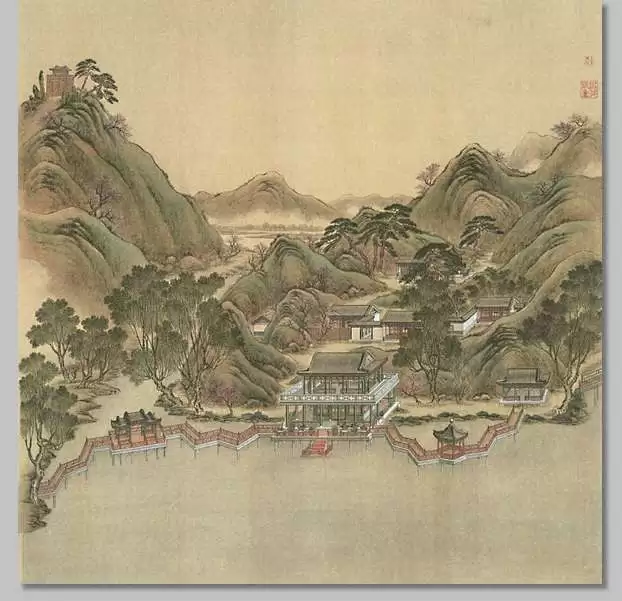
By Lillian M. Li
The 3 Great Qing Emperors
The Qing emperors (1644 to 1911) formed the last of the successive dynasties of China. As “alien” rulers, the Manchus inherited and adopted the cultural norms and political institutions of the previous Han Chinese Ming dynasty (1368 to 1644), at the same time maintaining their own Northeast Asian military organization, customs, and language. After consolidating their power within the former Ming boundaries, the Manchu emperors extended the territory of the empire to include Mongolia, Xinjiang, Tibet, and Taiwan.
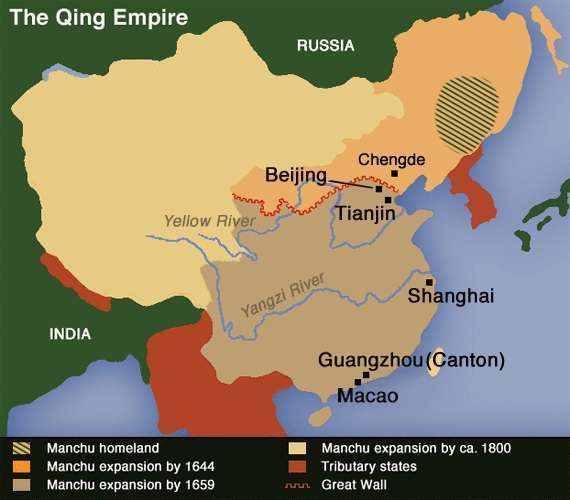
During the 18th century, China experienced almost unprecedented peace and prosperity. The population expanded, and the agricultural and commercial economies developed. In the 19th century, however, internal unrest was compounded by foreign aggression. The strong emperors of the 17th and 18th centuries were succeeded by less able descendents who were unable to cope with the cataclysmic events that followed in quick succession.
Three great emperors presided over the high period of Qing rule: the Kangxi emperor (r. 1662 to 1722), the Yongzheng emperor (r. 1723 to 1735), and the Qianlong emperor (r. 1736 to 1795). Together their reigns spanned a century and a half.
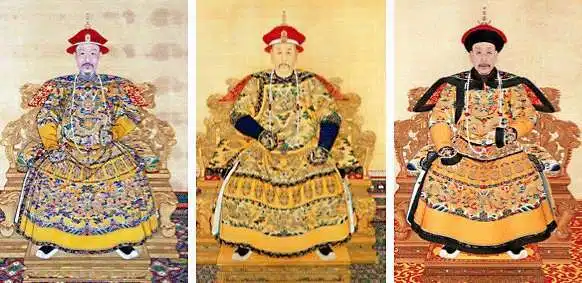
| Kangxi emperor (r. 1662 to 1722) |
Yongzheng emperor (r. 1723 to 1735) |
Qianlong emperor (r. 1736 to 1795) |
| The Palace Museum, Beijing
[ymy300] [ymy7009] [ymy7005] |
The Kangxi emperor (r. 1662 to 1722) was the second emperor of the dynasty, but was in fact its consolidating founder. He was a man of energy and vision, possessed a great intellectual curiosity, and embodied both the literary and the martial qualities that were valued in a Chinese emperor. As a martial emperor, he put down remaining internal rebellions in the southwest in order to secure Qing rule. He was untiring in the effort to overcome the menace of Mongol tribes in the area to the northwest of the Great Wall, personally leading troops into battle as late as the 1690s.
In order to familiarize himself with the central and southern parts of China, Kangxi made six royal tours to the Jiangnan area, the center of literati culture, beautiful scenery, and abundant agriculture. These tours also served the purpose of winning the allegiance of the Han Chinese elites of the south. After the second tour in 1689, Kangxi commissioned a series of 12 immense scroll paintings to commemorate his travels and each of the major cities and sites he visited.
Kangxi also took care to present himself as a literary emperor, well-educated in Chinese culture. He was diligent in his study of Chinese literature and classics, sponsored the collection of a great library, and liked to have himself painted as a scholar in his studio. The court artists of such portraits, formal and informal, were usually unidentified.
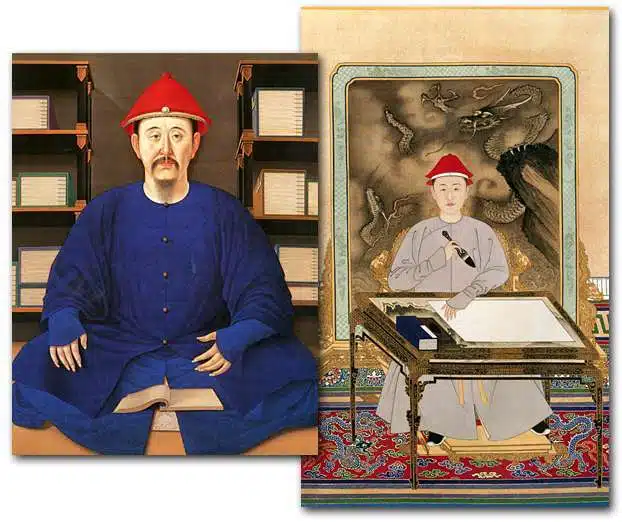
Although the Yongzheng Emperor (r. 1723 to 1735) ascended the throne under circumstances that aroused suspicion, he nevertheless proved to be an extremely diligent and able ruler. Unlike his father, who liked to ride and hunt, Yongzheng devoted himself to administration of the empire. Historians consider that his greatest accomplishments were in the realm of strengthening governmental institutions and practices.
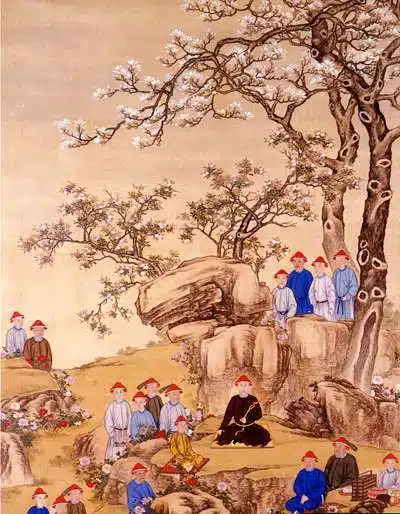
Following the examples of his illustrious grandfather and strong father, the Qianlong emperor (r. 1736 to 1795) further strengthened the empire. In the first half of his long reign, he achieved good governance of the provinces and witnessed unprecedented economic prosperity. His last decades, on the other hand, were characterized by internal disturbances, bureaucratic corruption, and his own personal failings that allowed power to fall into the hands of a palace guardsman, He Shen, who amassed tremendous wealth.
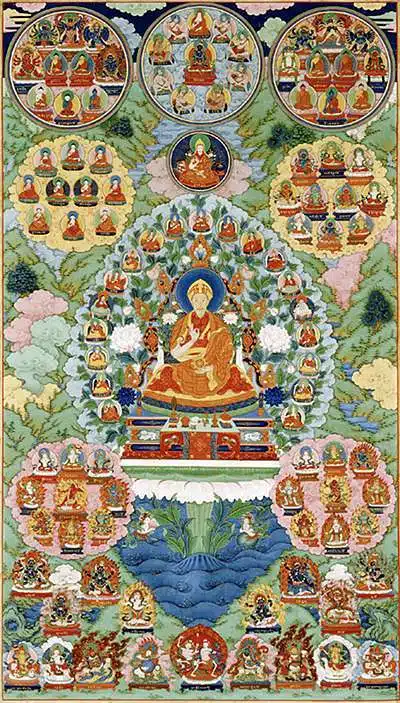
The Forbidden City
The Qing emperors established their capital at Beijing and ruled from the Forbidden City, the palace complex that had been built by a Ming emperor in the 1420s at the same location where the Mongol Yuan dynasty (1279 to 1368) had built its palace and capital. Today, the Forbidden City is run as a national museum that symbolizes both the present-day power of Beijing and the imperial past. The Forbidden City was the center of ceremonies and residence of the imperial family and servants including eunuchs. It was the innermost city of a series of nested cities, each defined by a set of walls. Surrounding it was the Imperial City, with government offices and the residences of some princes and officials. Surrounding this was the remainder of the Inner City, where the Manchu bannermen had their separate headquarters. South of this entire Inner City complex was the Outer City, where ordinary Han Chinese resided and worked, and where commerce and entertainment flourished.
The many walls and gates that surrounded each of these “cities” delineated the segregation of society by rank and function. The imposing formal reception halls of the Forbidden City were located at the front of the complex, while in the rear the space was divided into numerous complexes housing the empresses, imperial women, and servants.
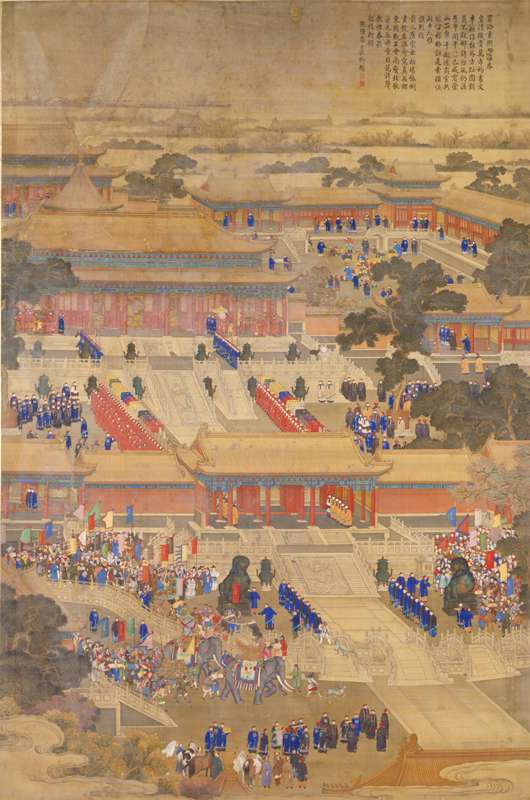
Entry to the Forbidden City was highly restricted. Its vast spaces, massive public halls, and multiple gates were meant to inspire a sense of awe. Envoys or high officials approaching the Hall of Supreme Harmony could not fail to understand their subordination to imperial authority. Even today the distance tourists must walk from the Gate of Heavenly Peace in the south to the northernmost gate or exit conveys an overwhelming impression of what imperial power meant.
The Qing Emperors as Builders
The private courtyards, pavilions, gardens, and residences were constantly expanded, renovated, or redesigned under the successive emperors. The Qianlong emperor was an avid builder within the Forbidden City and elsewhere in Beijing and the capital area. The Empress Dowager Cixi, who held a great deal of power in the late-19th century, resided there when she served as regent for her nephew and grandnephew, and oversaw new construction and decoration. Although they tirelessly built new temples, private residences, and other structures within Beijing, the emperors also sought to leave the confinement of the Forbidden City and the unpleasant summer climate of the capital. Each summer, for example, Kangxi escaped north of the Great Wall to the Mulan hunting grounds in Manchuria—the Manchu homeland—where he hunted, engaged in archery and other competitive activities, and generally enjoyed the fresh air of the mountains.
In 1703, Kangxi began construction of another palace and garden complex at Chengde (also known as Rehe or Jehol) named “The Mountain Resort for Escaping the Summer Heat”—Bishu shanzhuang—and development of this imperial retreat continued throughout the 18th century. At Chengde, as at the Yuanmingyuan, landscape scenes were designed to resemble famous Jiangnan temples or vistas. [2]
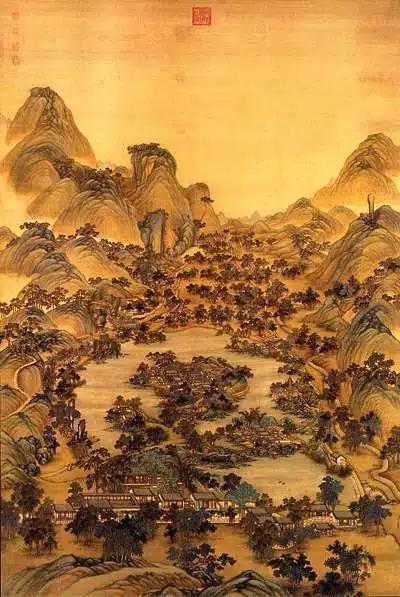
Although Kangxi’s son, the Yongzheng emperor, had no interest in hunting, all the other Qing emperors regularly summered at Chengde when possible. The Qianlong emperor, Yongzheng’s son, spared no expense in expanding the gardens, pavilions, libraries, and residences there. The mountain resort also served a diplomatic function, receiving Central Asian and other foreign emissaries.
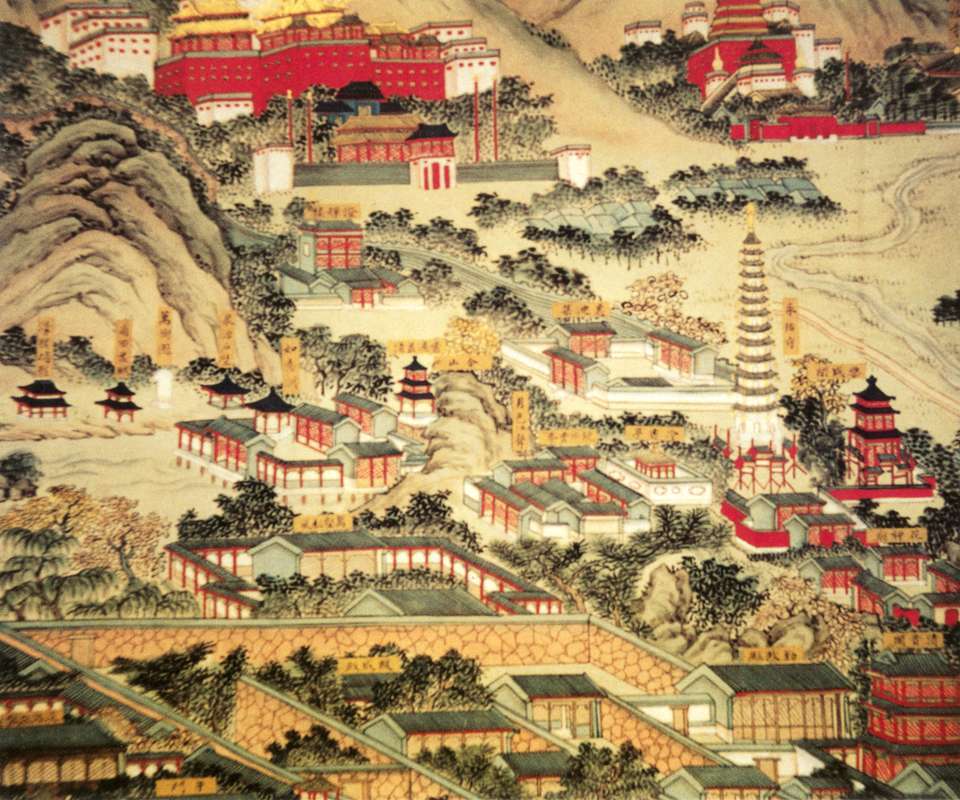
Original publication:MIT Visualizing Cultures.
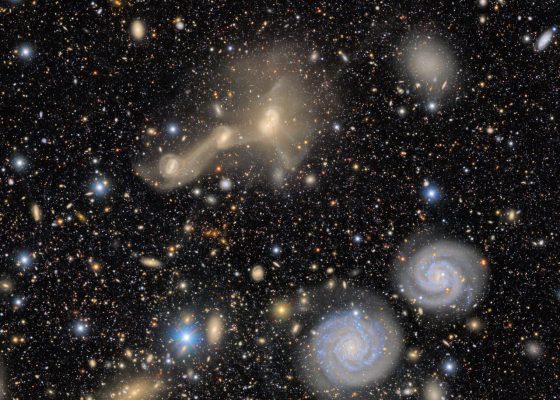
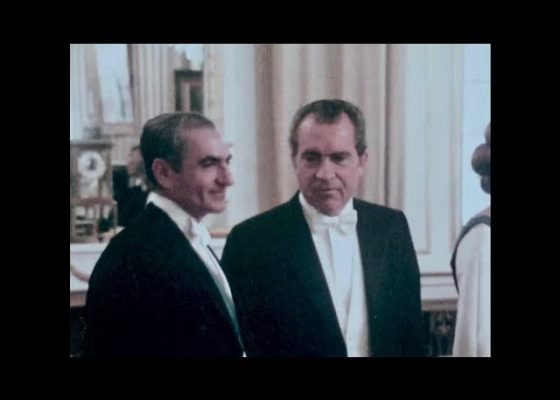
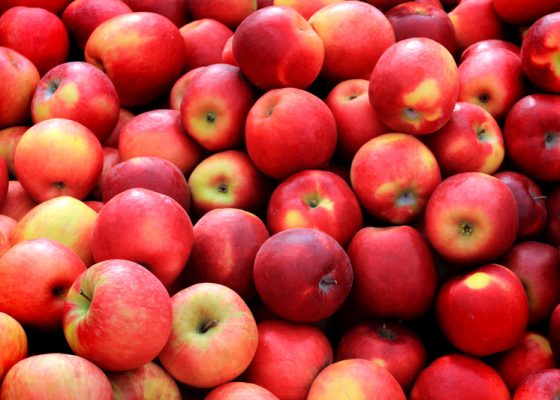
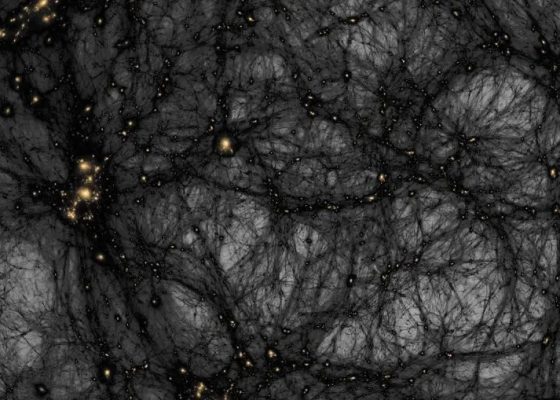


Cancel anytime


Using our website
You may use the The Middle Land website subject to the Terms and Conditions set out on this page. Visit this page regularly to check the latest Terms and Conditions. Access and use of this site constitutes your acceptance of the Terms and Conditions in-force at the time of use.
Intellectual property
Names, images and logos displayed on this site that identify The Middle Land are the intellectual property of New San Cai Inc. Copying any of this material is not permitted without prior written approval from the owner of the relevant intellectual property rights.
Requests for such approval should be directed to the competition committee.
Please provide details of your intended use of the relevant material and include your contact details including name, address, telephone number, fax number and email.
Linking policy
You do not have to ask permission to link directly to pages hosted on this website. However, we do not permit our pages to be loaded directly into frames on your website. Our pages must load into the user’s entire window.
The Middle Land is not responsible for the contents or reliability of any site to which it is hyperlinked and does not necessarily endorse the views expressed within them. Linking to or from this site should not be taken as endorsement of any kind. We cannot guarantee that these links will work all the time and have no control over the availability of the linked pages.
Submissions
All information, data, text, graphics or any other materials whatsoever uploaded or transmitted by you is your sole responsibility. This means that you are entirely responsible for all content you upload, post, email or otherwise transmit to the The Middle Land website.
Virus protection
We make every effort to check and test material at all stages of production. It is always recommended to run an anti-virus program on all material downloaded from the Internet. We cannot accept any responsibility for any loss, disruption or damage to your data or computer system, which may occur while using material derived from this website.
Disclaimer
The website is provided ‘as is’, without any representation or endorsement made, and without warranty of any kind whether express or implied.
Your use of any information or materials on this website is entirely at your own risk, for which we shall not be liable. It is your responsibility to ensure any products, services or information available through this website meet your specific requirements.
We do not warrant the operation of this site will be uninterrupted or error free, that defects will be corrected, or that this site or the server that makes it available are free of viruses or represent the full functionality, accuracy and reliability of the materials. In no event will we be liable for any loss or damage including, without limitation, loss of profits, indirect or consequential loss or damage, or any loss or damages whatsoever arising from the use, or loss of data, arising out of – or in connection with – the use of this website.
Last Updated: September 11, 2024
New San Cai Inc. (hereinafter “The Middle Land,” “we,” “us,” or “our”) owns and operates www.themiddleland.com, its affiliated websites and applications (our “Sites”), and provides related products, services, newsletters, and other offerings (together with the Sites, our “Services”) to art lovers and visitors around the world.
This Privacy Policy (the “Policy”) is intended to provide you with information on how we collect, use, and share your personal data. We process personal data from visitors of our Sites, users of our Services, readers or bloggers (collectively, “you” or “your”). Personal data is any information about you. This Policy also describes your choices regarding use, access, and correction of your personal information.
If after reading this Policy you have additional questions or would like further information, please email at middleland@protonmail.com.
PERSONAL DATA WE COLLECT AND HOW WE USE IT
We collect and process personal data only for lawful reasons, such as our legitimate business interests, your consent, or to fulfill our legal or contractual obligations.
Information You Provide to Us
Most of the information Join Talents collects is provided by you voluntarily while using our Services. We do not request highly sensitive data, such as health or medical information, racial or ethnic origin, political opinions, religious or philosophical beliefs, trade union membership, etc. and we ask that you refrain from sending us any such information.
Here are the types of personal data that you voluntarily provide to us:
As a registered users or customers, you may ask us to review or retrieve emails sent to your business. We will access these emails to provide these services for you.
We use the personal data you provide to us for the following business purposes:
Information Obtained from Third-Party Sources
We collect and publish biographical and other information about users, which we use to promote the articles and our bloggers who use our sites. If you provide personal information about others, or if others give us your information, we will only use that information for the specific reason for which it was provided.
Information We Collect by Automated Means
Log Files
The site uses your IP address to help diagnose server problems, and to administer our website. We use your IP addresses to analyze trends and gather broad demographic information for aggregate use.
Every time you access our Site, some data is temporarily stored and processed in a log file, such as your IP addresses, the browser types, the operating systems, the recalled page, or the date and time of the recall. This data is only evaluated for statistical purposes, such as to help us diagnose problems with our servers, to administer our sites, or to improve our Services.
Do Not Track
Your browser or device may include “Do Not Track” functionality. Our information collection and disclosure practices, and the choices that we provide to customers, will continue to operate as described in this Privacy Policy, whether or not a “Do Not Track” signal is received.
HOW WE SHARE YOUR INFORMATION
We may share your personal data with third parties only in the ways that are described in this Privacy Policy. We do not sell, rent, or lease your personal data to third parties, and We does not transfer your personal data to third parties for their direct marketing purposes.
We may share your personal data with third parties as follows:
There may be other instances where we share your personal data with third parties based on your consent.
HOW WE STORE AND SECURE YOUR INFORMATION
We retain your information for as long as your account is active or as needed to provide you Services. If you wish to cancel your account, please contact us middleland@protonmail.com. We will retain and use your personal data as necessary to comply with legal obligations, resolve disputes, and enforce our agreements.
All you and our data are stored in the server in the United States, we do not sales or transfer your personal data to the third party. All information you provide is stored on a secure server, and we generally accepted industry standards to protect the personal data we process both during transmission and once received.
YOUR RIGHTS/OPT OUT
You may correct, update, amend, delete/remove, or deactivate your account and personal data by making the change on your Blog on www.themiddleland.com or by emailing middleland@protonmail.com. We will respond to your request within a reasonable timeframe.
You may choose to stop receiving Join Talents newsletters or marketing emails at any time by following the unsubscribe instructions included in those communications, or you can email us at middleland@protonmail.com
LINKS TO OTHER WEBSITES
The Middle Land include links to other websites whose privacy practices may differ from that of ours. If you submit personal data to any of those sites, your information is governed by their privacy statements. We encourage you to carefully read the Privacy Policy of any website you visit.
NOTE TO PARENTS OR GUARDIANS
Our Services are not intended for use by children, and we do not knowingly or intentionally solicit data from or market to children under the age of 18. We reserve the right to delete the child’s information and the child’s registration on the Sites.
PRIVACY POLICY CHANGES
We may update this Privacy Policy to reflect changes to our personal data processing practices. If any material changes are made, we will notify you on the Sites prior to the change becoming effective. You are encouraged to periodically review this Policy.
HOW TO CONTACT US
If you have any questions about our Privacy Policy, please email middleland@protonmail.com
The Michelin brothers created the guide, which included information like maps, car mechanics listings, hotels and petrol stations across France to spur demand.
The guide began to award stars to fine dining restaurants in 1926.
At first, they offered just one star, the concept was expanded in 1931 to include one, two and three stars. One star establishments represent a “very good restaurant in its category”. Two honour “excellent cooking, worth a detour” and three reward “exceptional cuisine, worth a
Thank you for your participation,
please Log in or Sign up to Vote

123Sign in to your account